Effect of a Diode Laser on Wound Healing by Using Diabetic and Nondiabetic Mice
In conclusion, treatment at 18 J/cm2 shows a beneficial effect on wound healing in diabetic mice and does not have a detrimental effect in nondiabetic mice.
OPEN FILEEffect of Laser Phototherapy (k660 nm) on Type I and III Collagen Expression During Wound Healing in Hypothyroid Rats: An Immunohistochemical Study in a Rodent Model
Laser light therapy performed with the parameters of this investigation increased immunoexpression of collagen type I during tissue repair, and improved the quality of newly formed tissue in the presence of hypothyroidism.
OPEN FILEWound Healing of Animal and Human Body Sport and Traffic Accident Injuries Using Low-Level Laser Therapy Treatment: A Randomized Clinical Study of Seventy-Four Patients with Control Group
In addition to accelerated wound healing, the main advantages of LLLT for postoperative sport- and traffic-related injuries include prevention of side effects of drugs, significantly accelerated functional recovery, earlier return to work, training and sport competition compared to the control group of patients, and cost benefit.
OPEN FILEPhotochemical Tissue Passivation Prevents Contracture of Full Thickness Wounds in Mice
PTP significantly limits contracture of fullthickness wounds and improves wound healing. PTP?treated wounds histologically demonstrate more mature structural organization than untreated wounds and closely resemble native skin. PTP treatment may be applicable not only for excisional wounds, but also for wounds with a high incidence of contracture and associated morbidity
OPEN FILELow-level laser (light) therapy (LLLT) in skin: stimulating, healing, restoring
In dermatology, LLLT has beneficial effects on wrinkles, acne scars, hypertrophic scars, and healing of burns. LLLT can reduce UV damage both as a treatment and as a prophylaxis. In pigmentary disorders such as vitiligo, LLLT can increase pigmentation by stimulating melanocyte proliferation and reduce depigmentation by inhibiting autoimmunity. Inflammatory diseases such as psoriasis and acne can also benefit. The non-invasive nature and almost complete absence of side-effects encourages further testing in dermatology.
OPEN FILEPhotobiomodulation With Polychromatic Light Increases Zone 4 Survival of Transverse Rectus Abdominis Musculocutaneous Flap
Application ofPBMin polychromatic fashion enhances skin flap survival in experimental TRAM flap model both on preoperative basis as a delay procedure or as a therapeutic approach.
OPEN FILELaser Therapy for Incision Healing in 9 Dogs
Daily application of laser therapy at 8J/cm2 hastened wound healing in Dachshunds that received thoracolumbar hemilaminectomies for IVDD. It also improved the cosmetic appearance.
OPEN FILEHistological Assessment of a Combined Low-Level Laser/Light-Emitting Diode Therapy (685 nm/470 nm) for Sutured Skin Incisions in a Porcine Model: A Short Report
Our results demonstrate that the current dose of combined red and blue PBM improves the healing of sutured skin incisions in minipigs.
OPEN FILEPhotobiomodulation at 660nm Stimulates Fibroblast Differentiation
PBM at 660 nm with 5 J/cm2 was successful in stimulating the differentiation of fibroblasts into myofibroblasts in diabetic wounded cells, which was independent of the TGF??1/Smad pathway. Fibroblast transition into myofibroblasts is vital to wound healing, failure of which results in impaired healing; PBM is able to foster such a transition.
OPEN FILEEffect of laser treatment on first-intention incisional wound healing in ball pythons (Python regius).
Laser treatment resulted in a significant increase in collagen maturity at day 14 but did not otherwise significantly improve healing of skin incisions.
OPEN FILE